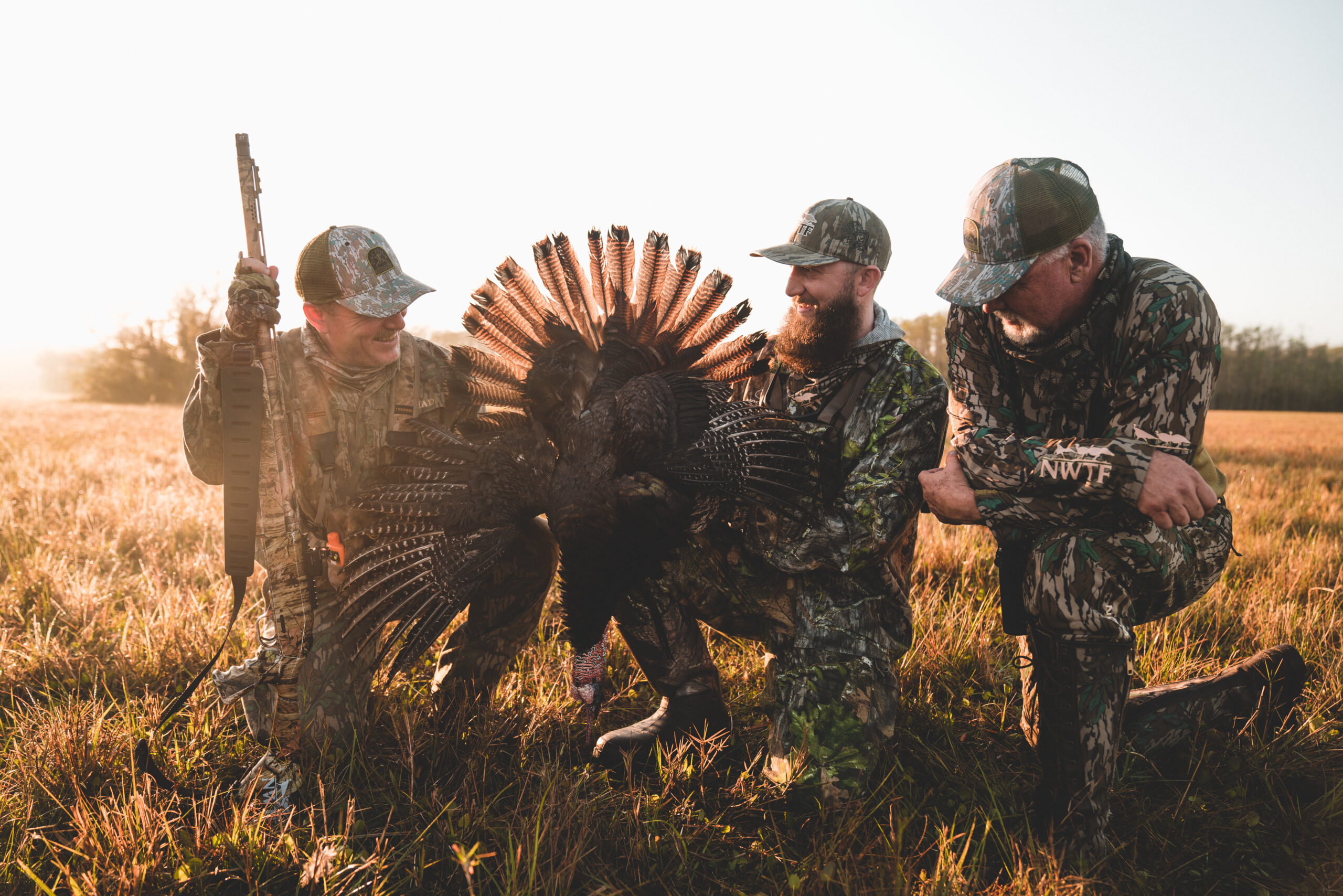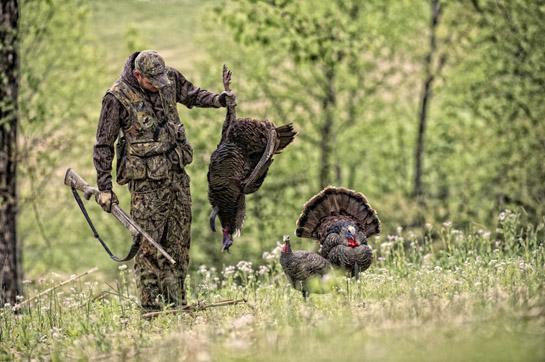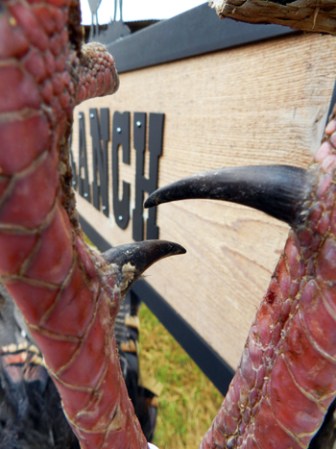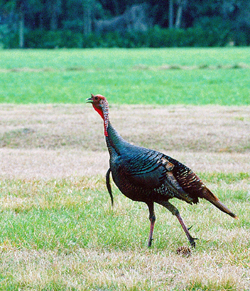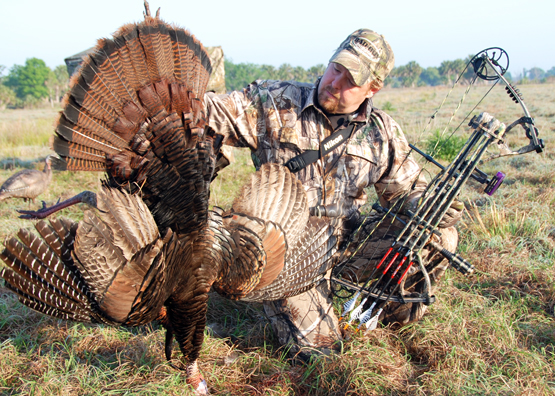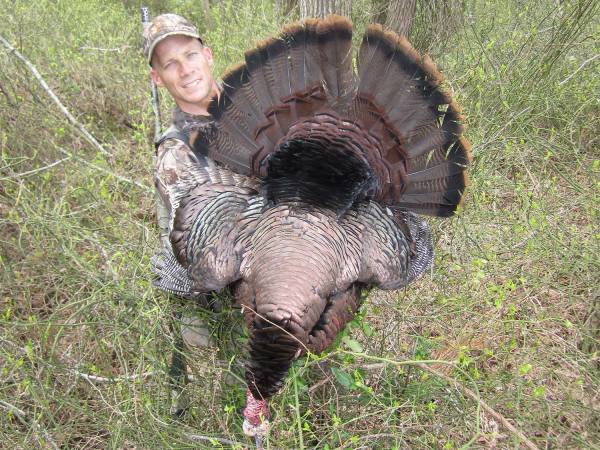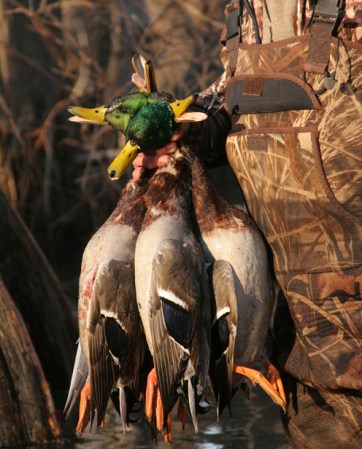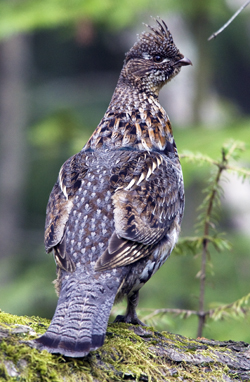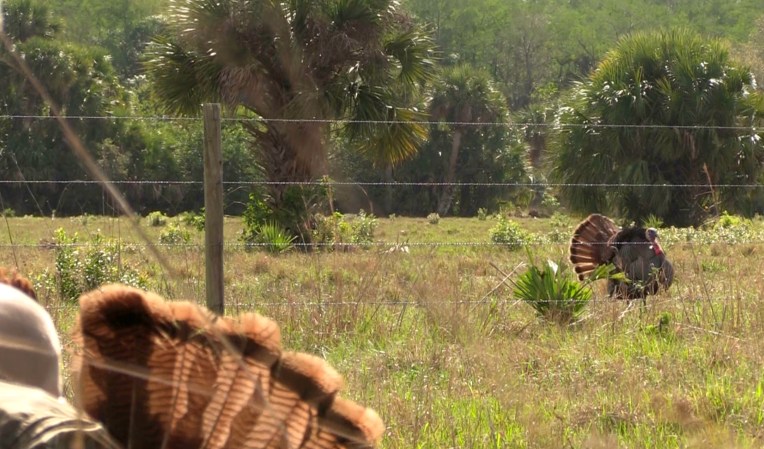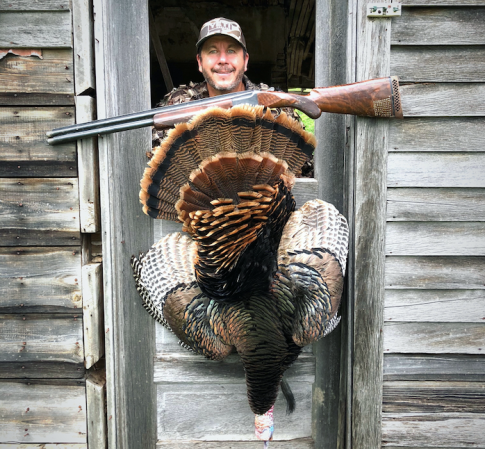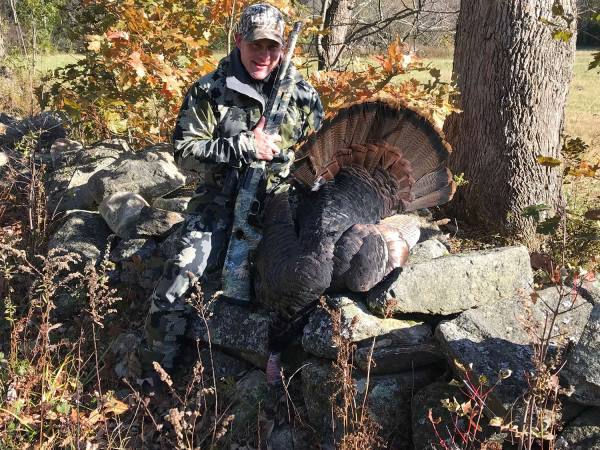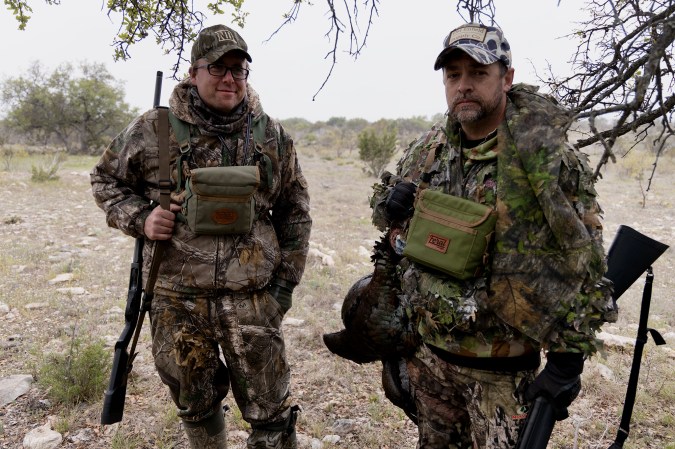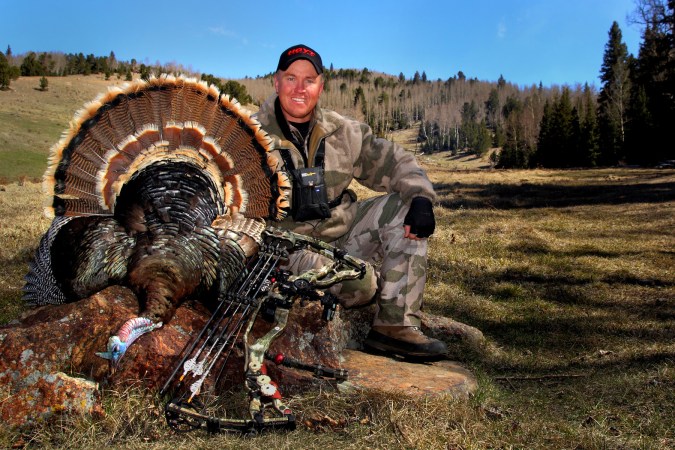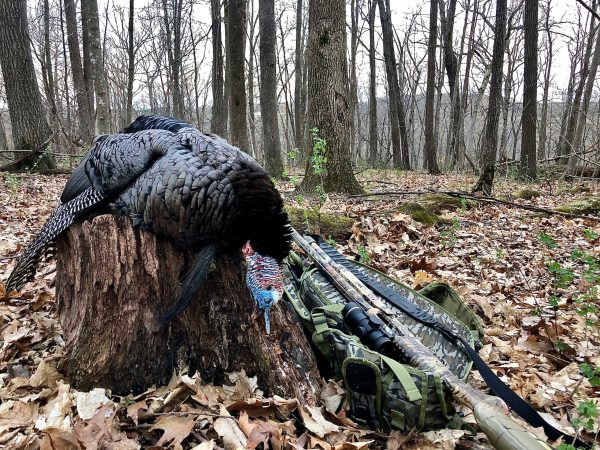Spring turkey season kicks off in late February with the youth season in Florida, and extends into the first week of June in Maine and Michigan. That’s around four months of 3 a.m. wake-up calls for die-hards like me. You may not be able to hunt that much, but if you’re ready to get after ol’ Thomas, now is the time to plan your trip.
To get a head start on the competition, here are four of my favorite early-season turkey hunting states where you can buy tags over the counter.
1. Florida
- Season dates: March 6 to April 11 (South of State Road 70); March 20 to April 25 (North of State Road 70).
- Non-resident cost: $46.50 (10-day hunting license); $125 (turkey permit).
- Bag limit: Two bearded turkeys on one permit (exception: one bearded turkey in Holmes county; bag limits and rules vary at state WMAs).
Daylight torched a thick blanket of fog and a chorus of wildlife erupted. Whippoorwills played on repeat, coyotes howled at the waning moon, and the chatter of sandhill cranes echoed overhead. As we tucked into our jungle-like hide of palmettos, we anxiously waited for the gobbling sermon to begin.
We were surrounded by gobblers in every direction. The birds at our 12 o’clock stole the show, pitching down one by one into the massive pasture.
Florida is home to some of the biggest cattle ranches in the country. And, generally speaking, where there are cattle, you’ll find turkeys. Florida’s dense swamps and oak hammocks combine with pasture ground to create ideal turkey habitat—namely, for the coveted Osceola subspecies that inhabits only the counties south of the panhandle.
Osceolas are typically the most difficult for hunters to check off their Grand Slam list. They have the smallest population of all four primary American wild turkey subspecies, and public hunting is limited in Florida.
“Apply for a quota hunt if your goal is to start your turkey season early or kill an Osceola on public land,” says Shane Simpson, a noted turkey hunter and host of Calling All Turkeys. Quota hunts take place on select Wildlife Management Areas, and are designed to limit the number of hunters in any area to increase the quality of the hunt. The application period begins annually in November, and it costs nothing to apply. You can build preference points if you fail to draw in your chosen unit.
If you don’t have the patience to commit to a public-land hunt, your best bet is to hook up with a reputable outfitter such as Tall Tine Outfitters with Ted Jaycox, or Mike Tussey’s Osceola Outdoors. A solid Osceola turkey outfitter will have a 100 percent opportunity rate (so make your shot count).
Tussey guided me on Osceolas. He yelped and clucked softly as the strutters danced through the fog. The birds were playing hard to get, so we ramped up our calling and eventually two longbeards approached our strutter-hen decoy combo with fire in their eyes. I chose one bird and killed him with a stout load of Federal Heavyweight TSS, capping off my third Grand Slam.
“If you read Tom Kelly’s book [”The Tenth Legion”], he talks about a mossy-headed gobbler, and they’re all in South Florida” Tussey said. “And if you look right here on top of his head, he’s got a small patch of feathers. The only place you’re going to find them is down here next to the Everglades.”
2. Nebraska
- Season dates: March 25 to May 31 (archery only; crossbows allowed); April 17 to May 31 (shotgun).
- Non-resident cost: $25 (habitat stamp); $128 (turkey permit).
- Bag limit: Three bearded turkeys (one per turkey permit).
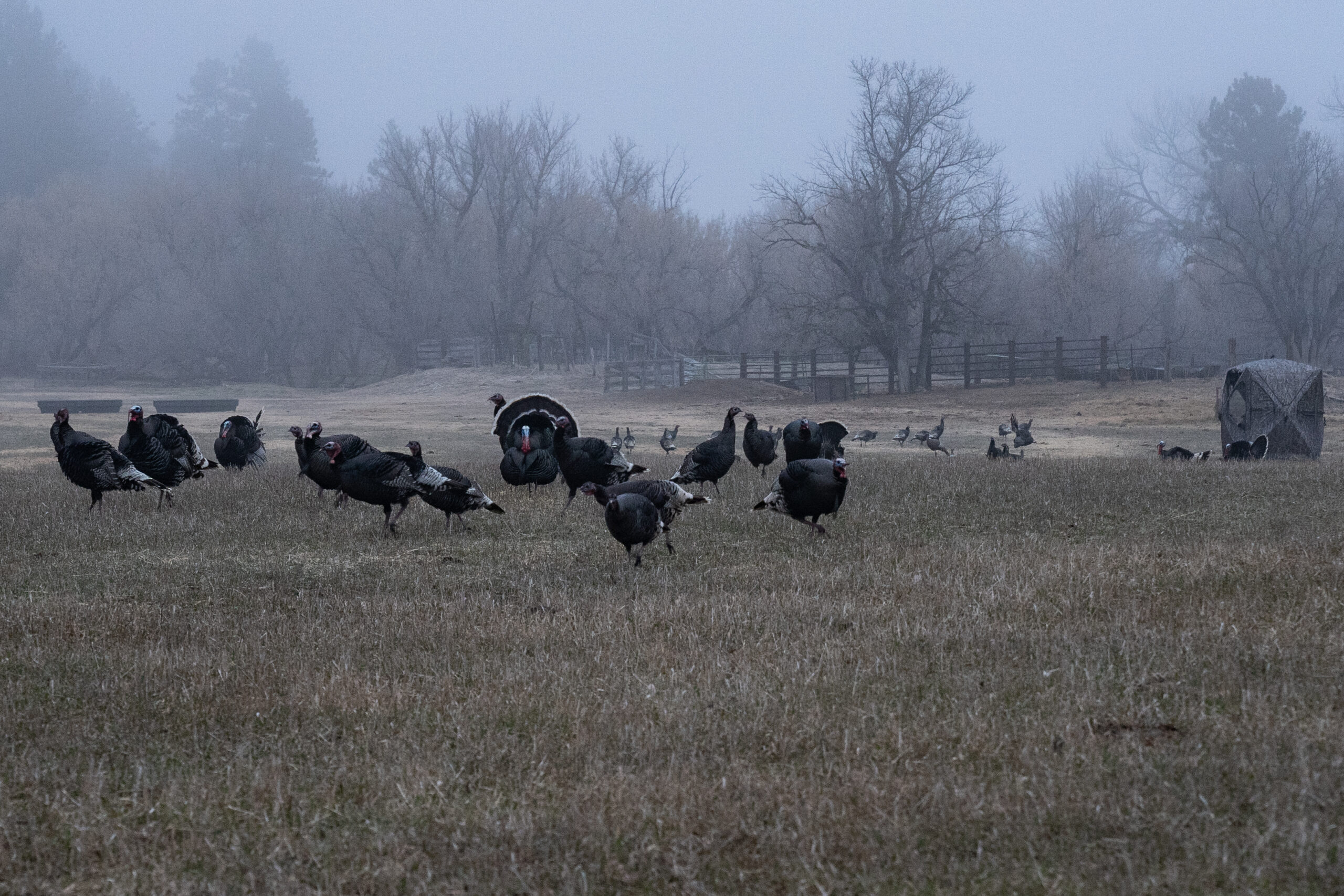
Every turkey hunter has different career goals. Aside from all the turkey slams, one of mine was to witness an epic traditional roost—the kind I saw on turkey hunting VHS tapes as a kid. I’m not talking about a measly 50- or 60-bird roost. To meet my definition of “epic” (a term oft abused), it would have to exceed 100 birds. It finally happened in Nebraska. This state isn’t even near the top of the list when it comes to total estimated turkey population. But there are a lot of birds. I’ve been hunting in Nebraska for a decade, rarely skipping a year, and I’ve been covered up in turkeys every time.
Archery season in Nebraska begins at the end of March, so it’s one of the earliest turkey seasons in the country. While I’m not a fan of attempting to kill turkeys with a bow, it’s awfully alluring to get a jumpstart on your season. Thankfully, the Cornhusker State allows crossbows during any archery season (including deer) throughout the year.
Looking to get a youngster into the mix? The youth archery (March 25 to May 31) and youth shotgun (April 10 to May 31) seasons are great opportunities, and permits cost only $8, plus the $25 habitat stamp. It’s a budget-friendly trip, and you can use the hunt to scout for the regular season.
Nebraska is one of few states where you can technically kill three of the four subspecies toward your Grand Slam: Easterns, Merriam’s, and Rios. I say “technically” only because I’m not sold on wrapping up the Rio portion of a Slam in the Midwest. But that’s just me. It’s also worth noting that many of the flocks in Nebraska are hybridized, so if you’re serious about seeking “pure” birds, make sure you stay away from the known subspecies borders. In terms of Merriam’s, western Nebraska has some of the cleanest white-tipped birds you’ll find.
Be prepared to hunt wintering flocks early in the season. Pack for a blizzard and a heat wave, and every possible condition in between. Call and then call some more. Use decoys, and try a lot of decoys if the birds are in large groups. Don’t be shy with these birds unless it’s obvious that they’ve been pressured.
Nebraska is 97 percent private, but don’t be fooled by the percentages—the turkey hunter’s playground is vast. There are more than 1.2 million acres of state, federal, and publicly-accessible private properties through the OFW (walk-in) program. Find some prospective ground starting with the Public Access ATLAS, and then narrow down your options with some extensive e-scouting in the HuntStand app. Knocking on doors to gain private-land access has proven to be worthwhile in Nebraska, and the HuntStand Property Info map layer makes it easier to address a landowner by name.
The epic roost (see video here) looked like a beehive as we watched birds swarming it from every direction. I stopped counting at 120. A deafening roar of gobbles and hen talk erupted from the roost at sunrise. Our ambush lay in wait. Turkeys dropped out of the giant cottonwoods by the dozens, their wings hissing through the air like fighter jets. Flocks of longbeards in full strut dotted the creek bottom and the surrounding pasture. For three days we carefully plucked gobblers from the mega flock with our crossbows, being sure not to spoil the roost.
3. Minnesota
- Season dates: Five time periods divided into 7-day seasons (A-E), April 14 to May 18, with one additional time period (F) May 19 to May 31.
- Non-resident cost: $96 (ages 18 and older); $4 (ages 13-17); $1 (ages 12 and younger).
- Bag limit: One bearded turkey.
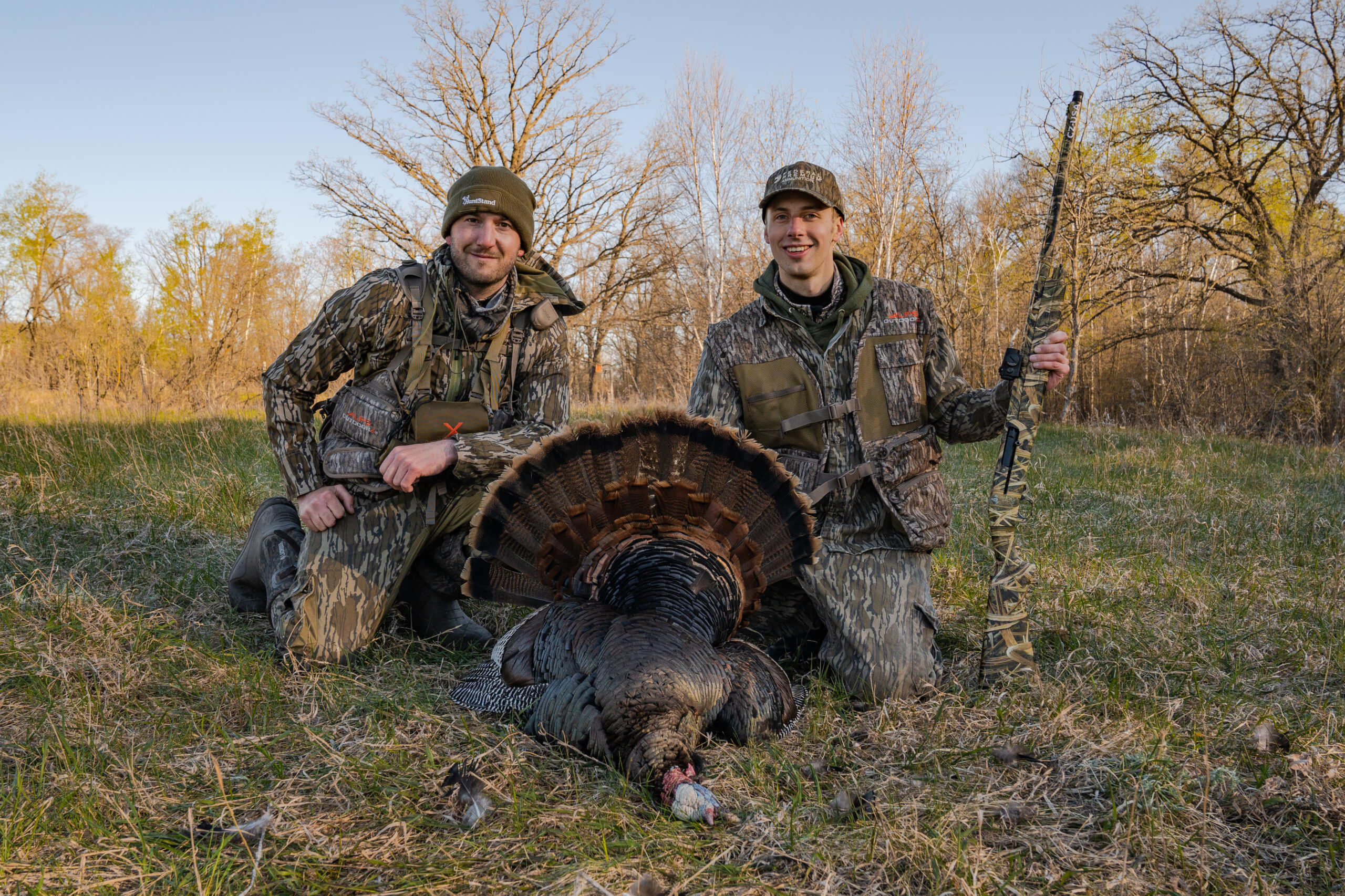
My home state of Minnesota has treated me well over the years. As an eager 16-year-old, I took my first turkey here—a jake that submitted to my subpar mouth-call clucks. Since then, I’ve notched my tag almost every spring on a variety of public land and family land, and by gaining permission on private land.
Minnesota is generous to nonresident turkey hunters, with over-the-counter tags that are reasonably priced, though you can only kill one bird. Youth hunters are especially fortunate, with even lower tag costs and the ability to hunt the entire season (A-F). The state recently gave turkey hunters even more flexibility to find success by freeing up the zone structure. Previously, you had to choose one zone and hunt within it for your entire season, but now you can hunt any zone in the state. While adults are limited to seven-day time periods, any turkey hunter who doesn’t score during their designated time period can return and hunt the final 13 days of the turkey season in time period F.
Between wildlife management areas, scientific and natural areas, state forests, walk-in access, and some federal ground, there’s an abundance of public land to chase gobblers on in Minnesota.
You’ll find turkeys all across the state, and don’t underestimate the low-pressured birds in the northern half of Minnesota. If you choose to hunt the bluff country to the south, be sure to pack some fishing gear to hook up on Driftless Area trout after you’ve killed your tom.
Experienced turkey hunters know that one of the best times to find a willing gobbler is during the middle of the day. One of my most recent Minnesota longbeards bit the dust at approximately 1:30 p.m. On this particular morning, rain showers kept me in bed for the dawn gobbling hour. I had endured enough long hours of getting soaked to the bone that season, so I slept in and decided it would be an office day instead of a hunting day.
Of course, soon after waking up and realizing the rain had stopped, I ditched my computer for my turkey vest and hauled ass to a nearby chunk of public land. Turkeys often surface from their tunnels after a good rain. My 3-mile trek of walking and calling turned up nothing…until I reached the far edge of the property. As soon as the gobbler cut me off, I knew he was in trouble. And he was close. I staked my hen and jake decoy combo into the ground and scrambled for cover. Within five minutes I could hear him spitting and drumming, and soon thereafter he strutted into my sights.
Read Next: The No-Excuses Turkey Season: How to Make this Spring Hunt Your Best One Yet
4. Texas
- Season dates: March 20 to May 2 (Rio Grande, South Zone); April 3 to May 16 (Rio Grande, North Zone), April 22 to May 14 (Easterns).
- Non-resident cost: $126 (spring turkey hunters do not need an additional Texas general hunting license).
- Bag limit: Four birds (gobblers or bearded hens dependent upon county) with no more than one Eastern subspecies turkey.
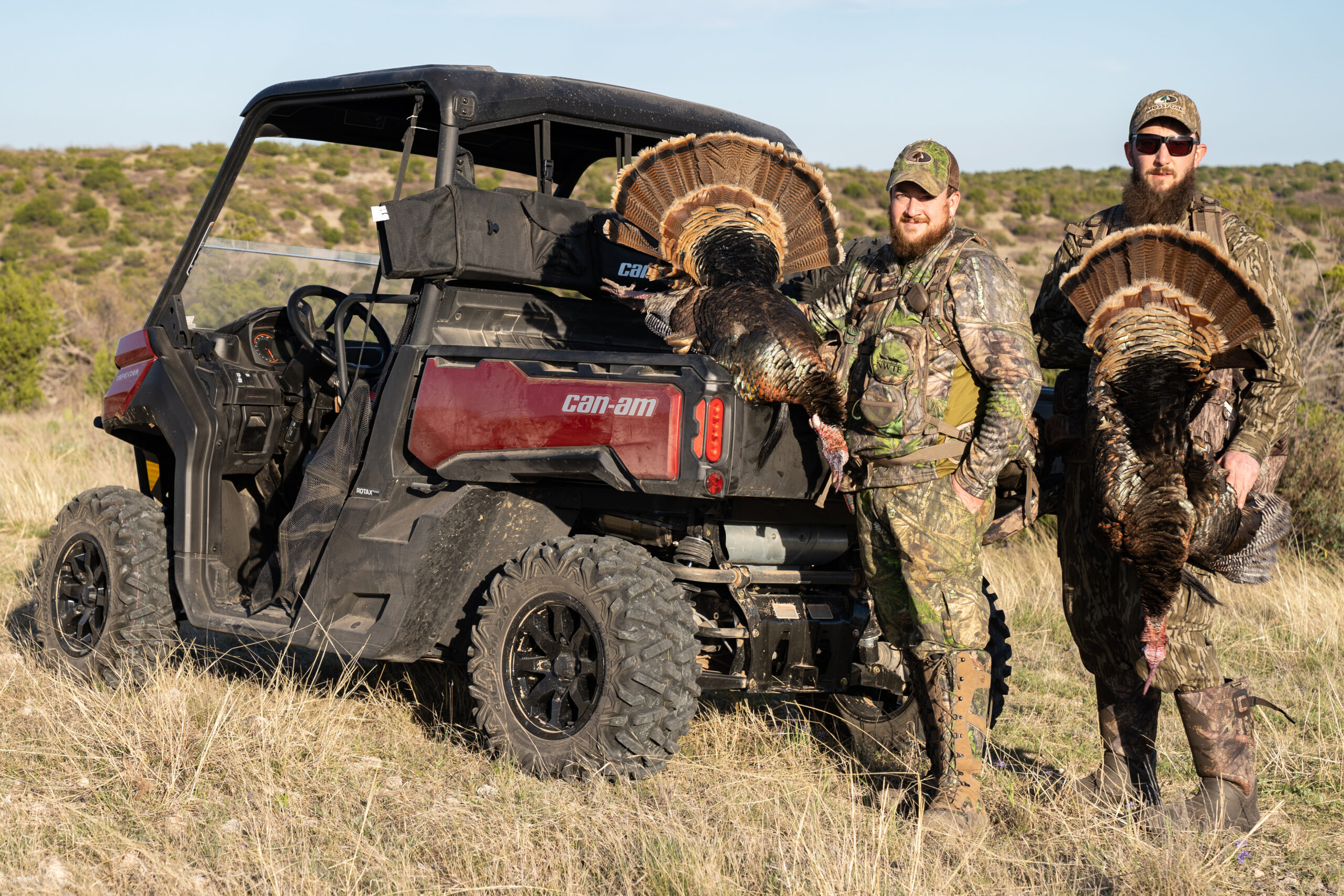
“There’s a strutter,” my uncle Neil pointed.
“Where?” his brother asked.
“Right by that zebra!”
Welcome to Texas. I’ve frequented Texas for spring turkey season during the past 11 years, starting with that inaugural hunt accompanied by my uncles and friend, Joel Beadles. We had met a guy named Dennis Woodall two years prior in the turkey hunting section of a Cabela’s store. Woodall, one of the original Quaker Boy pro staffers, gave us his phone number and said to call him if we ever wanted to kill a Texas Rio. Two years and one 19-hour drive later, we circled the wagons in the parking lot of a cheap motel in the Hill Country region. We followed Woodall and he cut us loose on a large private ranch. Everyone scored on gorgeous copper-feathered Rios. Since then, I’ve hunted the Hill Country again, and also branched out to south Texas.
Texas could be its own country, both in terms of wildlife management philosophies and the culturally engrained don’t-tread-on-me culture that radiates from every corner of the state. You’ll likely be shell-shocked by the diversity in critters—both native and exotic—and the grand scale of most landholdings in Texas. I love all of it.
There are more than 1 million public acres of hunting land in Texas, with approximately 50,000 acres that are open to turkey hunting. Several of these hunts are archery only, which can be great for bowhunters. Additional public land turkey hunting permits for specific areas are issued in special lotteries (drawn hunts or e-postcard hunts), which can require additional special permits.
Personally, I’ve only hunted Texas Rios on private ground—DIY and semi-guided. While there are Eastern gobblers in Texas, there are plenty of other more accessible places in the country to kill Easterns.
You can find great deals on Texas outfitted turkey hunts that will typically include food and lodging, and often you can pair your turkeys with feral hogs or exotic species (such as axis deer or blackbuck antelope) for an extra fee. Hogs and exotics can be hunted year-round. Find a decent-sized ranch that has turkeys and you shouldn’t have any trouble filling your four tags.
Read Next: There’s More to Texas Hunting Than Expensive, High-Fence Ranches
Much of Rio country consists of sparse, dry vegetation with very few trees suitable for roosting. Find a roost and you should be in the money; just remember to keep a respectful buffer around the roost, and the turkeys will likely return every evening. Like Merriam’s, Rio Grande gobblers are typically susceptible to aggressive calling and decoying tactics.
A couple of years ago, my friend Andrew Howard invited me to a desolate ranch for a spring turkey hunt. Recent droughts had knocked back the turkey population, but there were still enough birds around to get in the game. We retreated to the shade of a ground blind on the second afternoon of our hunt, seeking reprieve from the blistering Texas rays. The turkeys would still be lurking, despite the ungodly heat. We laid out an arsenal of calls and started running them, hoping to strike a lonely Rio gobbler from anywhere within earshot. Less than an hour had passed when two blood-red heads caught our attention from the far treeline. The pair of long-spurred strutters slowly approached our decoys, stopping every couple of steps to gobble and show off. One-two-three-shoot counts rarely work well for killing doubles, but we counted down and let ‘er rip. My bird folded on the right, but Andrew’s bird took flight. When the bird landed, an immediate follow-up dispatched the tom.
